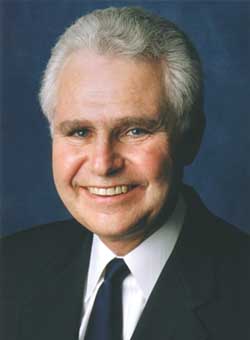
Not long ago, most utility investors considered California’s electricity policies too iconoclastic to support. Driven by far-left environmentalists and overzealous regulators, those policies have made it nearly impossible to build new power plants in the state, despite the urgent need for them.
Now, however, with growing proof that global warming is real and with Americans as a whole saying they favor burning more renewable fuels and less coal and gas (at least until they learn what such a shift will cost), California is no longer the only champion of "clean power." As a result, regulated electric utilities and independent generators nationwide have made environmental sensitivity a higher priority in their resource planning.
The basic challenge most utilities face is providing enough electricity to fuel a growing economy while decreasing (or at least not increasing) conventional air pollution or greenhouse gas emissions from power plants. It won’t be easy to do that, stabilize electric bills, and give investors a fair return on their money at the same time.
Changing corporate and consumer behavior
There’s no "silver bullet" solution to the problem on the horizon. But any solution must include incentives for using less electricity and using it more wisely. A good first step down that road would be to replicate nationwide a California electricity policy that has worked very well for more than a quarter-century.
It’s called "decoupling."
Simply put, decoupling forces regulated utilities to operate under rules that make their profits independent of their sales. In California, the Public Utilities Commission regularly tweaks electricity rates to ensure that utilities take in just enough revenue to run the business and deliver a fair return to investors. Any excess revenue is credited immediately to ratepayers, and any shortfall is recovered from them later. Decoupling gives utilities the best incentive for controlling their costs: If they fail to do so, they will miss their income targets.
Just as importantly, the policy replaces traditional utility incentives that encourage customers to use more electricity with incentives for using less. From a public policy standpoint, making utilities catalysts of reductions in consumption makes sense because they’re the companies that consumers pay for their electricity every month. Once profits have been decoupled from sales, utilities can serve as strong and effective advocates for improving the efficiency of everything from light bulbs to refrigerators to new buildings. The positive effects of decoupling can be magnified by giving utilities an opportunity to earn a fair return on their investments in energy efficiency, just as they would on an investment in a new power plant.
Improving end-use energy efficiency is the single most effective and immediately adoptable way to deal with power production’s adverse environmental impacts. Since California decoupled utility profits from sales, the resulting improvements in energy efficiency have kept the state’s per capita electricity consumption essentially flat, even as per capita consumption nationwide grew by 50%. Meanwhile, California—the world’s sixth-largest economy—has seen its economic output per kilowatt-hour improve by 40%. In the rest of the U.S., growth in that key indicator has been only 8%, fueled mainly by productivity increases.
Decoupling also makes sense because utility power plants account for 40% of U.S. greenhouse gas emissions and air pollution. If demand falls, utilities won’t have to build as many new plants (many of which are needed only to help meet the annual peak in demand that occurs on an early July afternoon), and we won’t have as much pollution.
Decoupling works
Case in point: Over the past 30 years Pacific Gas and Electric Co.’s customer energy-efficiency programs have led to reductions in demand that have avoided 125 million tons of heat-trapping CO2 emissions and eliminated the need to build 24 big new power plants. Even better, these programs have saved California consumers billions of dollars.
Improving energy efficiency is the least expensive and most practical energy strategy at our disposal today. The numbers tell the story: Energy-efficiency programs cost electricity customers an average of two to three cents per kilowatt-hour. That’s less than half of what they pay to help fund a new power project.
Utility regulators in eight states have already embraced decoupling as a way to drive gains in energy efficiency. That’s encouraging for those of us who want to see meaningful, pragmatic action to address energy security and global warming. Making decoupling a national policy would be even more encouraging. It’s one idea that deserves to play a major role in America’s energy strategy for the 21st century.
—Peter Darbee, formerly an investment banker on Wall Street, is chairman and CEO of PG&E Corp., the parent of Pacific Gas and Electric Co. PG&E provides energy to one of every 20 Americans.








